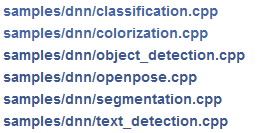
6个文件,看看在最新的OpenCV中,它们是如何发挥作用的。
在配置使用的过程中,需要注意使用较高版本的VS避免编译器兼容问题;由于DNN程序的运行依赖于训练成功的模型,因此需要预先下载准备;此外如果出现各种报错,需要对症下药。
此外,由于需要使用common.hpp文件,所以需要引入dnn目录到include中
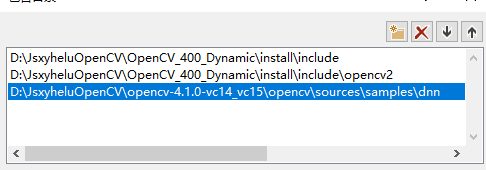
用到的数据集都放在:
链接:https://pan.baidu.com/s/1WPoXU3VodErPHZo6Yc21xA
提取码:01no
如果你没找到,那一定是我忘了。
=====================================================================================友善的分割线============================
对于这个例子,之前我结合tesseract做过一个更好的,这里就不重复了。将其转过来:
EAST+Tesseract识别自然场景下发票序号
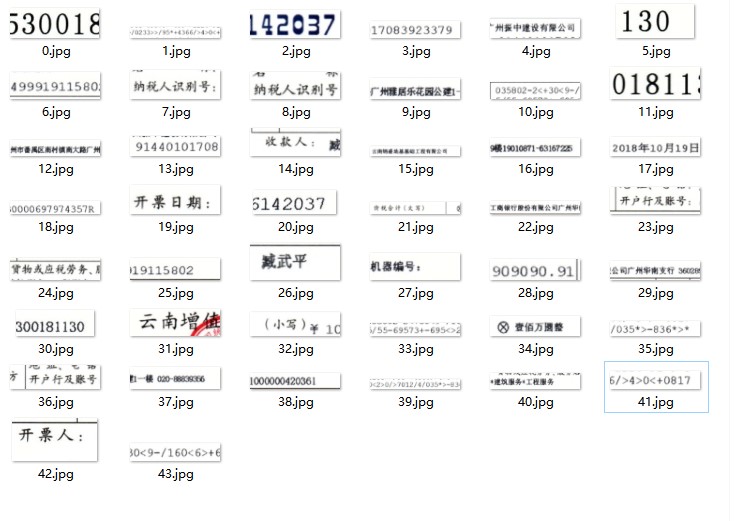

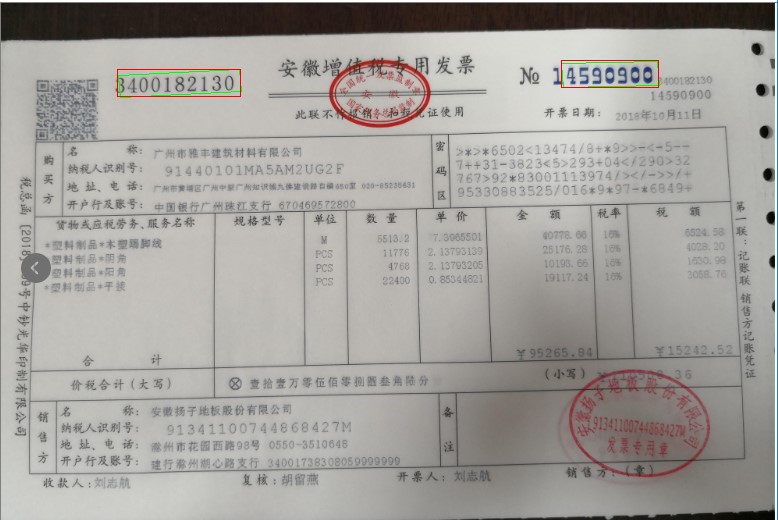
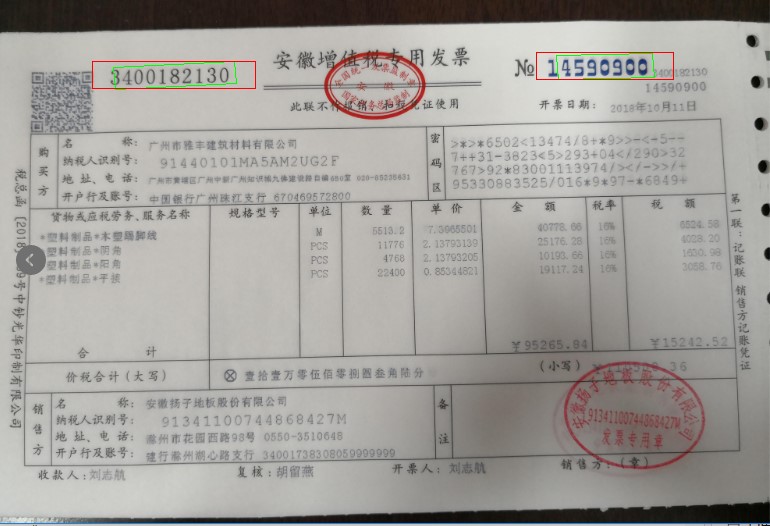



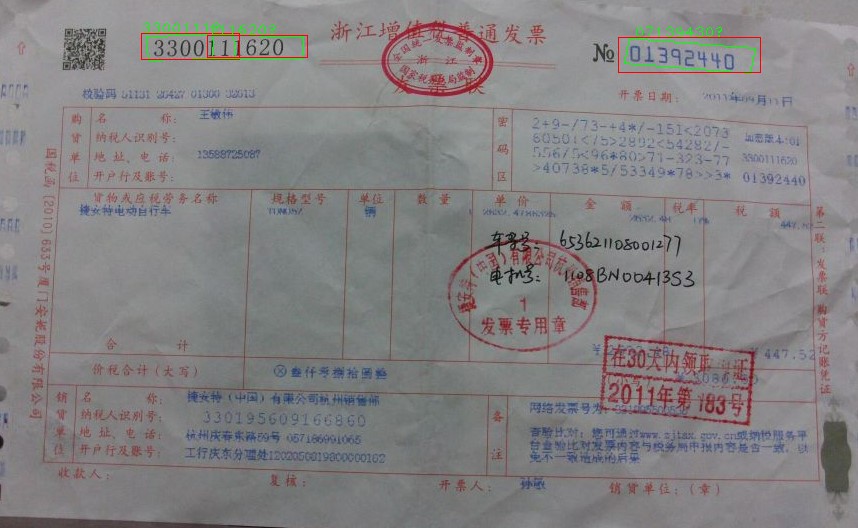
目前的代码基本可用,但是需要进行进一步的重构。
获得所有的rect

经过筛检后去掉很多

里面就有我需要的。

那么这里的识别还是有一定问题的,主要是east有漏的情况出现。适当进行修正。

那么识别的结果主要是两个entire,一个是前后有多余字符;二个是可能存在错误。




我认为在现有的识别结果上,应该可以得到进一步的增强。但是需要建立一个“识别和调整”的循环机制,并且对特别是tesseract的参数调节有进一步的认识。
重新编译了OpenCV4,并且对代码重构,看上去效果非常不错:
// EAST+Tesseract实现自然场景下发票编码识别
// by jsxyhelu.cnblogs.com
#include "pch.h"
#include <iostream>
#include <opencv2/core.hpp>
#include <opencv2/highgui.hpp>
#include <opencv2/imgproc.hpp>
#include <opencv2/imgproc/imgproc_c.h>
#include <opencv2/dnn.hpp>
#include <allheaders.h> // leptonica main header for image io
#include <baseapi.h> // tesseract main header
using namespace std;
using namespace cv;
using namespace cv::dnn;
using namespace std;
//对east的结果进行解码
void decode(const Mat& scores, const Mat& geometry, float scoreThresh,
std::vector<RotatedRect>& detections, std::vector<float>& confidences)
{
detections.clear();
CV_Assert(scores.dims == 4); CV_Assert(geometry.dims == 4); CV_Assert(scores.size[0] == 1);
CV_Assert(geometry.size[0] == 1); CV_Assert(scores.size[1] == 1); CV_Assert(geometry.size[1] == 5);
CV_Assert(scores.size[2] == geometry.size[2]); CV_Assert(scores.size[3] == geometry.size[3]);
const int height = scores.size[2];
const int width = scores.size[3];
for (int y = 0; y < height; ++y)
{
const float* scoresData = scores.ptr<float>(0, 0, y);
const float* x0_data = geometry.ptr<float>(0, 0, y);
const float* x1_data = geometry.ptr<float>(0, 1, y);
const float* x2_data = geometry.ptr<float>(0, 2, y);
const float* x3_data = geometry.ptr<float>(0, 3, y);
const float* anglesData = geometry.ptr<float>(0, 4, y);
for (int x = 0; x < width; ++x)
{
float score = scoresData[x];
if (score < scoreThresh)
continue;
// Decode a prediction.
// Multiple by 4 because feature maps are 4 time less than input image.
float offsetX = x * 4.0f, offsetY = y * 4.0f;
float angle = anglesData[x];
float cosA = std::cos(angle);
float sinA = std::sin(angle);
float h = x0_data[x] + x2_data[x];
float w = x1_data[x] + x3_data[x];
Point2f offset(offsetX + cosA * x1_data[x] + sinA * x2_data[x],
offsetY - sinA * x1_data[x] + cosA * x2_data[x]);
Point2f p1 = Point2f(-sinA * h, -cosA * h) + offset;
Point2f p3 = Point2f(-cosA * w, sinA * w) + offset;
RotatedRect r(0.5f * (p1 + p3), Size2f(w, h), -angle * 180.0f / (float)CV_PI);
detections.push_back(r);
confidences.push_back(score);
}
}
}
int main()
{
//参数和常量准备
String model = "./frozen_east_text_detection.pb";
std::vector<Mat> outs;
std::vector<String> outNames(2);
outNames[0] = "feature_fusion/Conv_7/Sigmoid";
outNames[1] = "feature_fusion/concat_3";
Mat blob;
std::vector<RotatedRect> boxes;
std::vector<float> confidences;
std::vector<int> indices;
char cbuf[255];
// 引入EAST model
Net net = readNet(model);
//对tesseract进行初始化操作
tesseract::TessBaseAPI tess;
if (tess.Init("E:\sandbox\新建文件夹\tessdata", "eng"))
{
std::cout << "OCRTesseract: Could not initialize tesseract." << std::endl;
return 1;
}
Mat src = imread("E:\未来项目\(15)微模式ocr\发票图片\2.png");
Mat board = src.clone();//用于显示图片
blobFromImage(src, blob, 1.0, Size(320, 320), Scalar(), true, false);//Scalar采用默认是设置
net.setInput(blob);
net.forward(outs, outNames);
Mat scores = outs[0];
Mat geometry = outs[1];
decode(scores, geometry, 0.5, boxes, confidences);//注意0.5是超参数
NMSBoxes(boxes, confidences, 0.5, 0.4, indices);
Point2f ratio((float)src.cols / 320, (float)src.rows / 320);//缩放比例
//获得最终框选结果
for (size_t i = 0; i < indices.size(); ++i)
{
RotatedRect& box = boxes[indices[i]];
Point2f vertices[4];
box.points(vertices);
for (int j = 0; j < 4; ++j)
{
vertices[j].x *= ratio.x;
vertices[j].y *= ratio.y;
}
Point2f* lastItemPointer = (vertices + sizeof vertices / sizeof vertices[0]);
vector<Point2f> contour(vertices, lastItemPointer);
//筛选出所有矩形中中心点y值小于整个图像1/6的举行,绘制最小外接矩形
Rect boundRect = boundingRect(Mat(contour));
//对rect适当进行扩充
boundRect = cv::Rect(boundRect.tl().x - 5, boundRect.tl().y, boundRect.width + 10, boundRect.height);
if (boundRect.y < src.rows / 6)
{
Mat roi = src(boundRect);
//绘制外接边线
for (int j = 0; j < 4; ++j)
line(board, vertices[j], vertices[(j + 1) % 4], Scalar(0, 255, 0), 1);
rectangle(board, boundRect, Scalar(0, 0, 255));//绘制外接最小矩形
//打印数据
sprintf_s(cbuf, "E:\未来项目\(15)微模式ocr\发票图片\roi\%d.jpg", i);//打印出来
imwrite(cbuf, roi);
//将切割出来的图片输入tesseract中
auto pixs = pixRead(cbuf);
if (!pixs)
{
std::cout << "Cannot open input file: " << std::endl;
return 1;
}
// recognize
tess.SetImage(pixs);
tess.Recognize(0);
// get result and delete[] returned char* string
std::cout << std::unique_ptr<char[]>(tess.GetUTF8Text()).get() << std::endl;
putText(board, std::unique_ptr<char[]>(tess.GetUTF8Text()).get(), boundRect.tl(), 1, 1.0f, Scalar(0, 255, 0));
// cleanup
tess.Clear();
pixDestroy(&pixs);
}
}
imshow("board", board);
cv::waitKey();
getchar();
return 0;
}